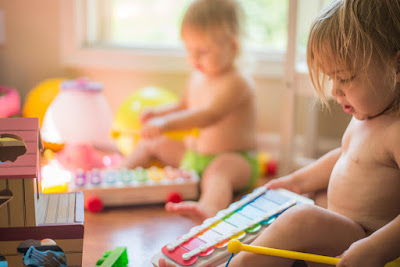Technology
in the Preschool Classroom
Young children are born learners. They love to explore and
soak in new experiences. Preschool teachers can use technology to enhance
children'snatural curiosity. Not sure how to make this happen? Look at what
technology in the preschool classroom looks like.
What is
Technology?
When we talk about technology in education, we mean the use of
tools or machines in classrooms. Think computers, tablets, and printers. In a
preschool classroom, technology can take many forms. What does technology look
like in a preschool classroom? Let's take a tour of Ms. Smith's classroom and
see what she has going on.
Technology
to Support Young Learners
The early years are all about figuring things out. Children
are developing as learners as they investigate their world, and they're
naturally curious about everything and explore how things work at every turn.
Ms. Smith knows her students need technology, as they provide a way for her
students to grow as investigative learners. As such, she uses technology to
support learning, not merely as a teaching tool.
What types of technology does she have in her classroom? Look
at some common types of preschool technology:
Computers
Ms. Smith's classroom has several different types of
computers, electronic devices used to store and process data. Several desktop
and laptop computers are available for the children to use for exploring
programs related to science, language, and math. The students also have access
to tablets, computer-like devices that responds to on-screen interaction
instead of a mouse.
Tablets aid in introducing preschoolers to subjects like
science and language.
tablet
Listening
Devices
Young children enjoy listening to songs, books, poems, and
stories. When a teacher isn't available to read with a student, they can listen
on a digital player, like a compact disk player or electronic device such as an
iPod. The children can listen as a group or wear headphones for private
listening.
Recording
Devices
Ms. Smith takes many opportunities to record her students in
action. She uses digital cameras and videos of the children creating structures
in the block area or putting on a play. Students also have access to these
devices for making their own memories of events. Ms. Smith encourages the
children to tap into their creativity when taking pictures and videos by making
digital books and stories with their work.
Instructional
Technology in Preschool
Ms. Smith is a well-informed teacher. She uses technology to
help her plan lessons, instruct and record student progress. How does she do
this? Her tool bag includes:
Document
Camera
Many times, when showing her young students, a book or leaf,
Ms. Smith hears 'I can't see!' Using a document camera helps solve this problem
in a snap. A document camera is basically a digital overhead projector. An
object can be placed in front of the camera and the image is enlarged and shown
on a screen. Ms. Smith uses her document camera to show her whole class what
the inside of a leaf looks like, or to read a story aloud so all students can clearly
see print and pictures.
Data
Processing
Even parents of preschool children want to know how their
children are progressing. Ms. Smith records and collects data about her
students - things like number sense or reading readiness indicators - and keeps
them in a digital program meant for processing this information. This data processor
helps her organize information and make it presentable to parents.
Enjoy,
Ms. Nora Sierra
EC Assistant Principal
Discovery School

















